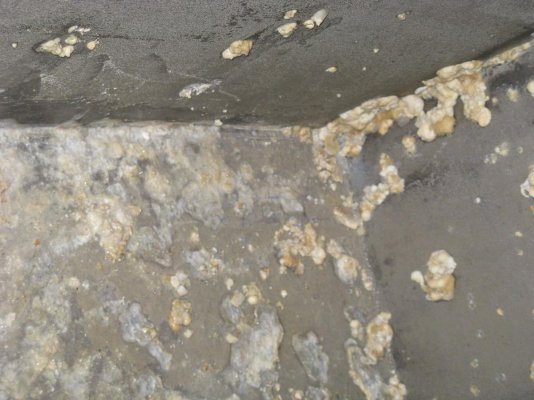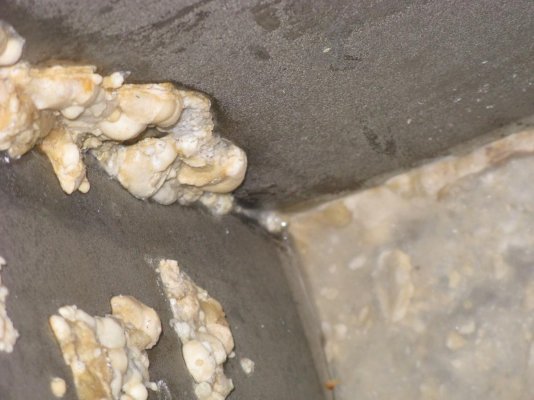jungpeter
Guru
A previous thread regarding bleach in water tanks reminded of a water tank issue I was forced to deal with on my Canoe Cove 53 a few years ago. In short, the OEM water tank (~25 years old at the time) began leaking. Investigation revealed a tank that, by the nature of the original build, was simply not inspectable, nor certainly repairable in-situ. So, out it came, with considerable effort and expense, and in went a replacement.
The original tank material was aluminum (alloy unknown), and nicely fabricated (quality welds, proper baffling, etc.). After removing the tank, investigation revealed numerous "crusticles" coating the interior of the tank, each generating a corrosion pit underneath. One of these corrosion pits eventually made its way through the tank wall, leading to the failure. The crusticles were hard, white, calcium-like in appearance, and looked all the world like ossified buggers on the walls of the boy's gym in Jr. High School. I didn't attempt to have a sample chemically analyzed, but they appeared to this somewhat-knowledgeable guy as the byproduct of a chemical reaction between the chemicals and/or minerals in the water and the aluminum alloying elements that made up the tank.
I'm attaching (hopefully (sucessfully) a couple of pictures of the interior of the tank. Anybody else seen such a thing?
The original tank material was aluminum (alloy unknown), and nicely fabricated (quality welds, proper baffling, etc.). After removing the tank, investigation revealed numerous "crusticles" coating the interior of the tank, each generating a corrosion pit underneath. One of these corrosion pits eventually made its way through the tank wall, leading to the failure. The crusticles were hard, white, calcium-like in appearance, and looked all the world like ossified buggers on the walls of the boy's gym in Jr. High School. I didn't attempt to have a sample chemically analyzed, but they appeared to this somewhat-knowledgeable guy as the byproduct of a chemical reaction between the chemicals and/or minerals in the water and the aluminum alloying elements that made up the tank.
I'm attaching (hopefully (sucessfully) a couple of pictures of the interior of the tank. Anybody else seen such a thing?


